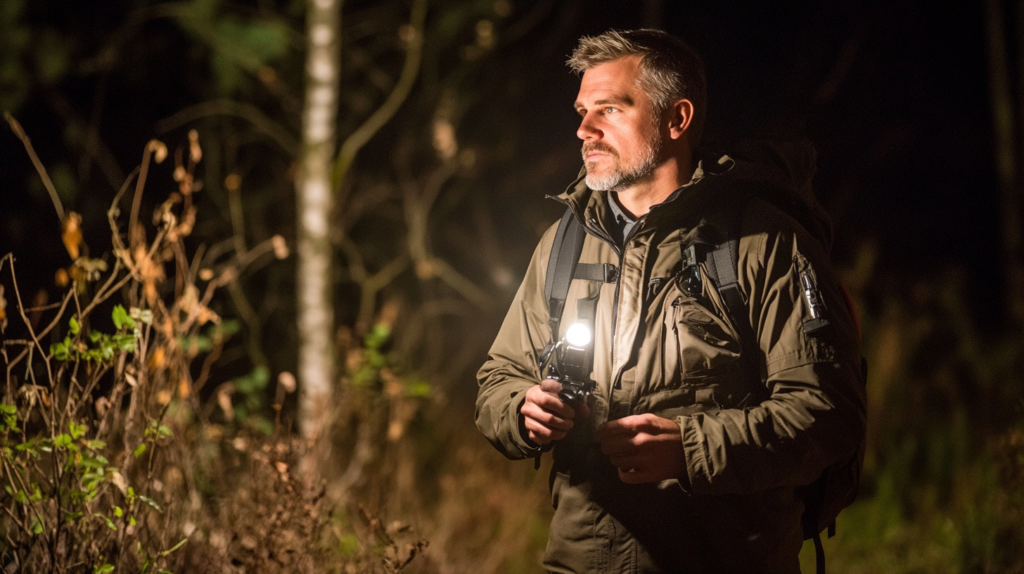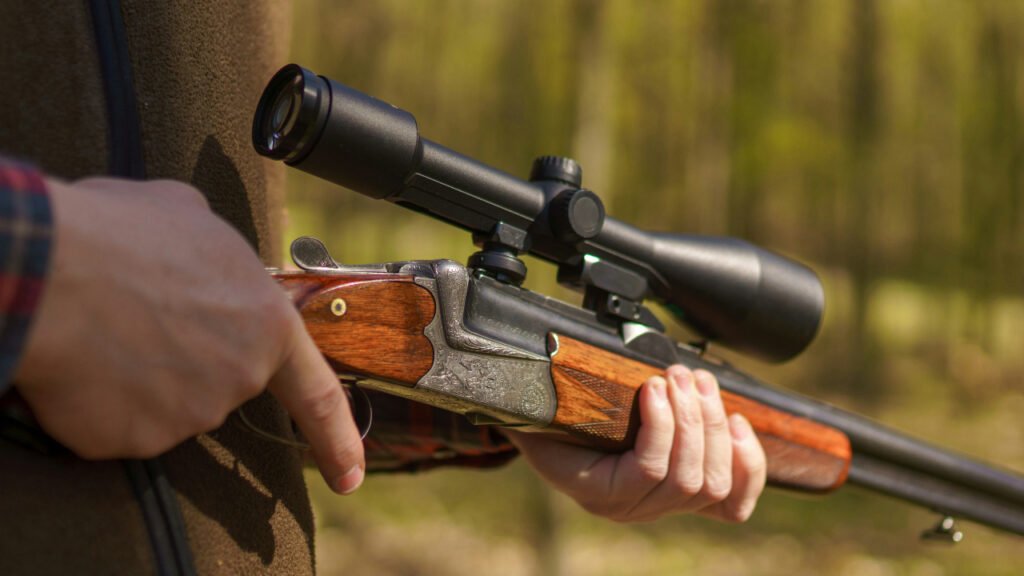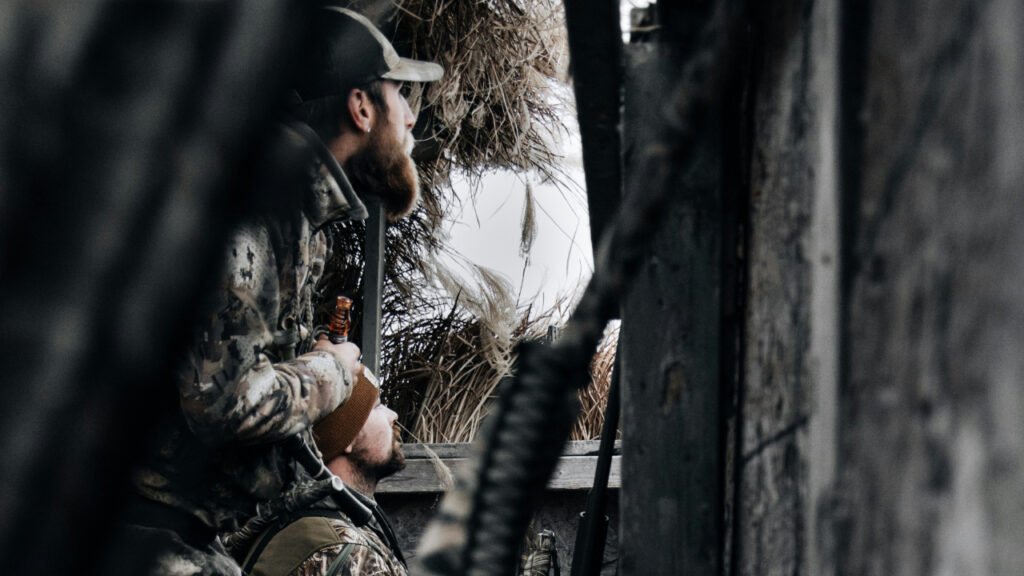Hunting in low-light conditions, like at dawn or dusk, can be thrilling, but it also presents a unique set of safety challenges. When the world dims, our senses don’t pick up as much detail, which means more caution is needed. Whether it’s knowing your target or making sure others know where you are, safety comes first in these conditions. Below are some of the most important things to keep in mind when hunting in low light to ensure you and others stay safe.
Use Proper Illumination

In low-light situations, visibility is your first line of defense. A good headlamp or handheld flashlight is essential for navigating through woods, identifying landmarks, or spotting hazards. However, be cautious with bright lights—they can easily spook game or ruin your night vision. Red or green lights are better for preserving your ability to see in darkness, as they are less disturbing to wildlife and still provide adequate illumination for safety.
Wear Reflective or Light-Colored Gear

While camouflage is vital for staying undetected by game, it’s equally important to be seen by other hunters. In low-light conditions, wearing reflective strips or bright orange clothing makes you more visible to others without alarming your prey. In many areas, wearing blaze orange is not just a smart choice, it’s required by law. This bright color stands out in dim settings, helping to prevent accidental shootings caused by mistaken identity.
Know Your Target and What’s Beyond

Low light can make it harder to clearly identify your target, so it’s crucial to take extra time to verify what you’re aiming at before pulling the trigger. A well-placed shot only happens when you’re 100% certain of your target and what lies behind it. The shadows and muted colors of dusk or dawn can make it easy to mistake movement for game, so patience and careful observation are key to avoiding accidents.
Use Optics Designed for Low-Light

Low-light hunting calls for specialized optics. Binoculars and scopes with larger objective lenses and better light transmission can make a huge difference. These devices help you see more clearly when the light is fading. Many hunters also use scopes with illuminated reticles, which help in aiming when visibility is poor. Ensure that your gear is properly calibrated and suited for the conditions you’ll face.
Communicate Your Location

Hunting in low light can be disorienting, so it’s important to let others know where you are at all times. Always inform someone—whether it’s a hunting buddy or a family member—of your planned route and the areas you’ll be hunting. Consider using a GPS tracker or an app that shares your location in real-time with trusted contacts. Additionally, if you’re hunting in a group, stay in regular communication to avoid accidents due to miscommunication or misunderstandings.
Stay Aware of Changing Weather Conditions

Weather can change quickly, especially during early morning or late evening hunts. In low-light conditions, it’s even harder to see approaching weather systems, which can affect visibility or your ability to return safely. Check the forecast before heading out, and keep an eye on cloud cover, fog, or approaching storms, as they can dramatically reduce visibility and make navigation more difficult. Always pack the right clothing and gear to handle unexpected weather shifts.
Be Mindful of Noise

In low-light environments, your hearing becomes even more crucial as a survival tool. To stay safe, be mindful of the sounds around you. Footsteps, breaking twigs, or rustling leaves could indicate nearby wildlife—or other hunters. Being alert to subtle sounds can help you avoid startling game and prevent dangerous encounters. Keeping quiet when moving can also help you track game more effectively in dim lighting.
Maintain Safe Gun Handling Practices

In low-light conditions, maintaining strict discipline with your firearm is essential. Keep your finger off the trigger until you’re ready to shoot, and always point your weapon in a safe direction. Extra care should be taken when moving through dense underbrush or rough terrain to avoid accidental discharge. It’s easy to become disoriented in low light, so staying aware of your surroundings and firearm safety is critical.
Use a Quality Hunting Stand

If you use a tree stand or a blind, ensure it’s well-maintained and secure, especially in low light when visibility of your footing and equipment may be impaired. Always wear a safety harness when using a stand, and avoid climbing in or out when it’s dark if possible. Regularly check for wear and tear or damage that could pose a risk during your hunt.
Take Regular Breaks to Assess Your Environment

Low-light hunting requires greater concentration, which can be mentally exhausting. Make it a habit to take short breaks to assess your environment. Pause every 10-15 minutes to listen for movement, check the weather, or evaluate your positioning relative to known landmarks. This keeps you sharp and helps you avoid mistakes that could lead to dangerous situations.

